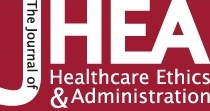Back Issue: Vol.6 No.1 (Spring/Summer 2020)
ISSN 2474-2309
Research Ethics
- Evangel Sarwar, Ph.D., MPH, HEC-C
Address correspondence to: Evangel Sarwar. MPH, Ph.D.,HEC-C. Department of Health Science & Human Ecology, California State University, San Bernardino. Email: evangel.sarwar@gmail.com
Pages: 1-18
Advances in medical technology have not only raised our expectations that medicine can perform miracles and keep us alive; it has also raised conflicts in allowing death to take its natural course. Many dilemmas are faced by physicians as well as families in end-of-life care and relieving the suffering. Ethical dilemmas about how to ensure individuals with terminal illness/end-oflife experience a “peaceful death,” when the meaning and perception of death has changed due to technology? In the past, death was expected and accepted, with rituals. Today, death has been reduced to an unheard phenomenon – shameful and forbidden. The advances in technology brought with it a change in culture of medicine from caring to curing, where medicine is expected to heal any disease. This advance has also acted as a double-edged sword, where longer lives come at the price of greater suffering, illness, and higher costs. While most Americans want to die at home, surrounded by loved ones – the “medicalization” of death does not allow the natural course of death to take place. Although recent studies indicate that more Americans are dying at home, most people still die in hospital beds – alone. This paper looks at the transition that took place in the concept of death and dying, and the impacts of technology, and makes suggestions for facilitating a “peaceful death” in the twenty-first century.
- Ariel Clatty, Ph.D and Erin Hedglen, MA
Address correspondence to: Erin Hedglen. MA., Email: MA_hedglene@duq.edu
Pages: 19-23
In a society that overlooks, stigmatizes, and becomes desensitized to the growing substance use disorder population, medical ethics looks to the future to help patients that are high-risk and non-adherent (HRNA) while in an acute care setting. Medical ethics can create an environment that supports providers in managing patients with behavioral, social, and substance use disorders as well as offering a higher quality of care by providing consistent, safe, and effective care for patients. This initiative provides a safe and therapeutic environment for patients and healthcare teams. This stance of medical ethics outlines the communication management of non-adherent patients and family members to help aid in the continuation of their inpatient medical treatment. All possible avenues will be explored for the best environment to optimally control the situation, and to provide safe and effective medical care for the patient and lessen the risk to staff. Ethics’ goal is to facilitate conflict management discussions between medical providers and the patient. This paper then gives the perspectives of medical ethics conflict management strategies pertaining to a case study based upon the HRNA patient population.
Viewpoint
- Raksha K. Bhat, MD, PGDMLE, PGDHHM
Address correspondence to: Raksha K. Bhat. MD, PGDMLE, PGDHHM. Central Laboratory, St.Martha’s Hospital Bengaluru-560001. India. Email: rakshakbhat@gmail.com
Pages: 24-25
Ethical dilemmas
- Shriram Savrikar, Dr.
Address correspondence to: Shriram Savrikar. Dr., Email: sssavrikar@gmail.com
Pages: 26-34
India will exceed WHO recommended Doctor: population ratio of 1:1000 in 2024 with only MBBS doctors. Thereafter 8 lac registered ISM&H doctors will become surplus. They will have no place to go and no means to survive. Otherwise also as a doctor they were never a part of modern medicine oriented public health care sector. Occasionally whenever they are entertained in this sector, care is taken to keep their status and wages lower than that of a nursing personnel. Delivery of Ayurveda services was never allowed through public health care sector since pre-independence. The script of this neglect was written by Bhore committee in 1946. The Indian administrators in post-independent India, followed the same script. Outside the government, in absence of clear policy on permission or prohibition to practice modern medicine, and without any appropriate training, Ayurveda practitioners, facing occasional prosecutions, continued to practice modern medicine. Today their fate remains undecided. Still 50000+ ISM&H graduates come out every year from Universities to try their luck. This is totally unethical on the part of every responsible Indian and the concerned authorities. This is amounting to mass unemployment and frustration among this youth power. Prohibition on delivery of Ayurveda service through public health service, keeping ambiguity on the issue of permission or prohibition of practice of modern medicine by Ayurveda practitioner, allowing exposure of people to Ayurveda practitioners for receiving modern medicine treatment, when the Ayurveda practitioner is not trained for delivery of such service and allowing exponential increase in number of ISM&H practitioners to the tune of 52000 every year in absence of assured survival means; all these activities are extremely unethical on the part of government authorities. Immediate steps need to be taken to stop these unethical practices and save this deterioration and plight of Ayurveda.
